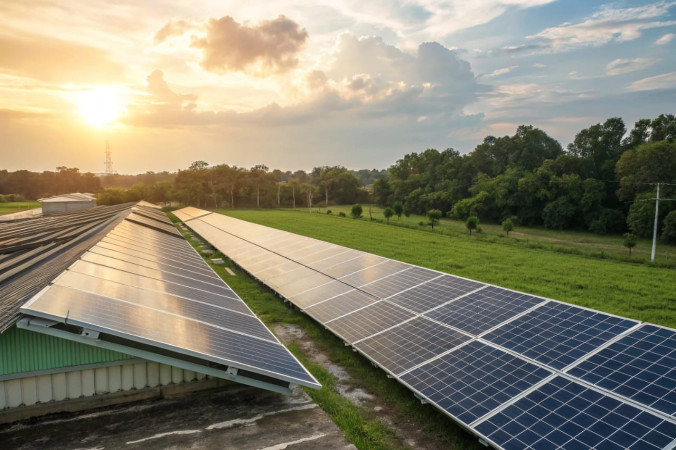
Follow India Renewable Energy News on WhatsApp for exclusive updates on clean energy news and insights
Global Electricity Demand Surges as Renewables Take Center Stage
Feb 26, 2025
Global electricity consumption is set to grow at an annual rate of 4?tween 2025 and 2027, reaching 3,500 TWh, the fastest rate in recent years, according to the International Energy Agency (IEA). The surge in demand is being driven by industrial production, air conditioning, transportation electrification, and the rapid expansion of data centers.
Global Demand and Regional Trends
- Emerging economies will account for 85% of global electricity demand growth, with China alone comprising over half of the world's demand growth. Its electricity demand is expected to rise by 6% annually until 2027.
- India, Southeast Asia, and other emerging markets will also experience significant demand increases, mainly due to economic growth and rising air conditioner usage.
- Africa continues to face challenges in electrification, with 600 million people in sub-Saharan Africa lacking reliable electricity access.
- Advanced economies (U.S., EU, Japan, Korea, Canada, and Australia) will account for 15% of demand growth up to 2027, led by EVs, heat pumps, and data center expansions.
In the U.S., electricity demand increased by 2% in 2024, driven by data centers, semiconductor manufacturers, industrial consumers, and EV adoption. In the EU, demand declined in 2022 and 2023 due to an economic slowdown but grew by 1.4% in 2024, fueled by heat pumps, EVs, and data centers.
Renewables Poised to Dominate Growth
Renewables are expected to meet 95% of global electricity demand growth by 2027, overtaking coal by 2025.
- Solar alone will provide half of this demand growth, with annual global generation rising from 2,000 TWh in 2024 to 2,600 TWh by 2027.
- Solar surpassed coal power generation in the EU in 2024, contributing over 10% of the region’s electricity mix.
- China, the U.S., and India are projected to reach a 10% solar share by 2027.
India’s electricity demand rose 5.8% in 2024 and is projected to grow at 6.3% annually until 2027, surpassing its previous 5% growth rate from 2015-2024.
- Peak demand is expected to exceed 400 GW by 2030, with non-fossil fuels making up 65% of installed capacity.
- Air conditioner usage is a major driver, with peak demand increasing by over 7 GW per degree Celsius in 2024, expected to exceed 11 GW per degree by 2027.
Renewable Energy Growth in India
- Solar generation is expected to grow at 28% annually until 2027, driven by a 50 GW solar module manufacturing capacity and government programs like PM-Surya Ghar and PM-KUSUM.
- Wind energy grew at a CAGR of 7% from 2018-2024 and is projected to accelerate to 11?GR until 2027.
- India's first offshore wind projects (500 MW each in Gujarat and Tamil Nadu) received INR 7450 crore viability gap funding.
- Battery storage is gaining traction, with 4 GWh of battery energy storage systems (BESS) under development and a policy push for pumped hydro storage. Utility-scale battery capacity is set to reach 9 GW by 2030.
- The Green Hydrogen Mission is advancing, with pilot projects in transport, shipping, and steel.
While coal-fired generation still accounts for 74% of India's electricity mix, its growth is projected to slow to 2% annually until 2027, as renewables scale up to meet increasing demand.
The IEA report signals a transformational shift in the global energy mix, with renewables—especially solar—leading the charge in meeting rising electricity demand. India is emerging as a key player in clean energy adoption, aligning with its commitment to reducing reliance on fossil fuels and achieving energy security.